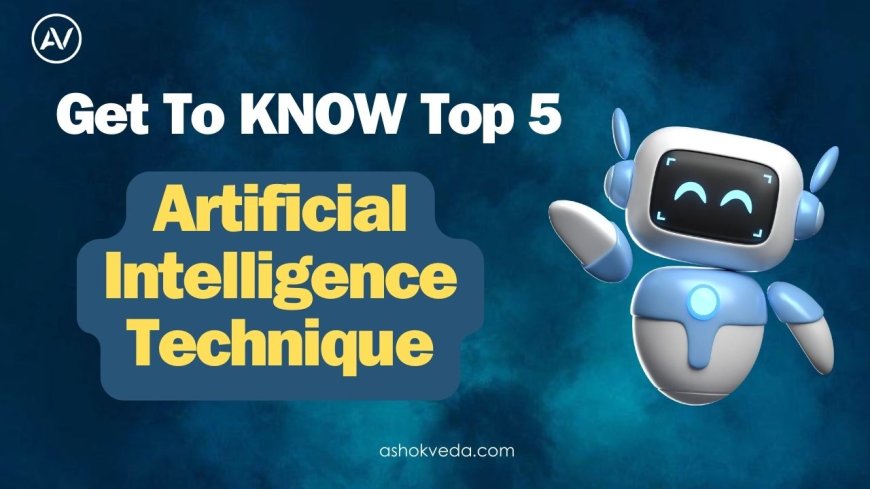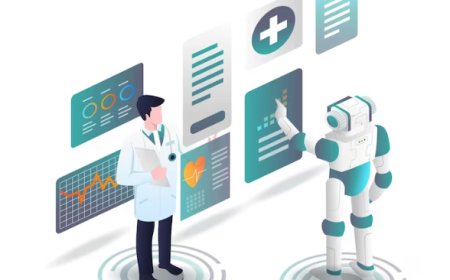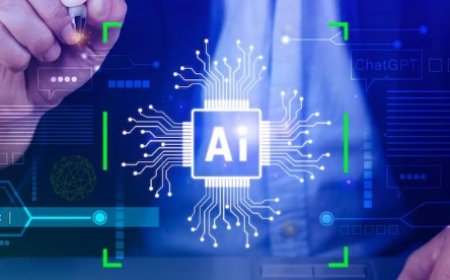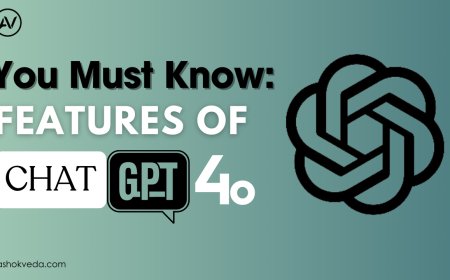Top Artificial Intelligence Technique
Learn various artificial intelligence techniques, including machine learning, deep learning, neural networks, and natural language processing.

Hey, there! Curious about the interesting field of Artificial Intelligence (AI) and how it is changing the way we live and work? we'll look at some of the most popular artificial intelligence strategies that promote innovation across multiple industries. Whether you're a tech professional trying to improve your skills, or just interested in the magic behind AI, this user-friendly guide will provide you with an excellent understanding of the basic methods employed in AI today. and let's study the world of Artificial Intelligence Techniques together!
What is artificial intelligence?
Before we get into the specific techniques,. AI is the replication of human intellect in robots engineered to think and learn like humans. These intelligent systems may do tasks that normally require human intelligence, such as visual perception, speech recognition, decision-making, and language translation. AI's major goal is to construct autonomous systems capable of making data-driven judgments and reacting to new knowledge.
Top Artificial Intelligence Techniques
1. Machine Learning
Machine Learning (ML) is one of the most widely used Artificial Intelligence techniques. It involves training algorithms to learn from data and make predictions or decisions without being explicitly programmed. ML techniques are used in various applications, such as spam detection, recommendation systems, and predictive analytics.
-
Supervised Learning: This technique involves training a model on a labeled dataset, where the correct output is provided for each input. The model learns to map inputs to outputs and can make predictions on new, unseen data. Examples include classification and regression tasks.
-
Unsupervised Learning: In this technique, the model is trained on an unlabeled dataset and must find patterns or relationships within the data. Common unsupervised learning methods include clustering and dimensionality reduction.
-
Reinforcement Learning: This technique involves training an agent to make a sequence of decisions by rewarding it for good actions and penalizing it for bad ones. It’s commonly used in robotics, gaming, and autonomous systems.
Deep Learning is a subset of machine learning that uses neural networks with many layers (hence the term "deep") to model complex patterns in data. This artificial intelligence technique has revolutionized fields like computer vision, natural language processing, and speech recognition.
-
Convolutional Neural Networks (CNNs): CNNs are primarily used for image processing tasks. They consist of multiple layers that automatically detect features in images, such as edges, textures, and shapes.
-
Recurrent Neural Networks (RNNs): RNNs are designed for sequential data, such as time series or text. They have connections that loop back on themselves, allowing them to maintain information about previous inputs. Long Short-Term Memory (LSTM) networks are a type of RNN that can capture long-term dependencies.
-
Generative Adversarial Networks (GANs): GANs consist of two neural networks, a generator and a discriminator, that compete against each other. The generator creates fake data, while the discriminator tries to distinguish it from real data. GANs are used in image generation, video synthesis, and other creative applications.
3. Natural Language Processing (NLP)
Natural Language Processing (NLP) is a field of AI that focuses on the interaction between computers and human language. It involves teaching machines to understand, interpret, and generate human language in a way that is both meaningful and useful.
-
Text Classification: This technique involves categorizing text into predefined classes, such as spam detection or sentiment analysis.
-
Named Entity Recognition (NER): NER identifies and classifies named entities in text, such as names of people, organizations, or locations.
-
Machine Translation: This technique automatically translates text from one language to another, using models trained on large bilingual datasets.
4. Computer Vision
Computer Vision is an artificial intelligence technique that enables machines to interpret and understand the visual world. By using images and videos, computer vision algorithms can extract meaningful information to perform tasks like object detection, image recognition, and video analysis.
-
Image Classification: This involves assigning a label to an image based on its content. For example, identifying whether an image contains a cat or a dog.
-
Object Detection: This technique not only classifies objects within an image but also identifies their location using bounding boxes.
-
Image Segmentation: This involves partitioning an image into multiple segments to simplify or change its representation, making it easier to analyze.
5. Expert Systems
Expert systems are AI programs that mimic the decision-making abilities of a human expert. They use a knowledge base and a set of rules to solve specific problems within a particular domain, such as medical diagnosis or financial forecasting.
-
Rule-Based Systems: These systems use a set of if-then rules to make decisions. They are straightforward to implement but can become complex as the number of rules increases.
-
Fuzzy Logic Systems: These systems handle uncertainty and imprecision by using fuzzy sets and logic. They are useful in situations where binary true/false decisions are not possible.
Applications of Artificial Intelligence Techniques
AI techniques are being applied across various industries, bringing about important advancements and efficiencies.
1. Healthcare
In healthcare, AI is being used for diagnosing diseases, predicting patient outcomes, and personalizing treatment plans. Techniques like machine learning and computer vision are used to analyze medical images, while NLP is used to process and understand medical records.
2. Finance
The finance industry leverages AI for fraud detection, risk assessment, and algorithmic trading. Machine learning models analyze large datasets to identify patterns and predict market trends, while NLP techniques are used for sentiment analysis on financial news.
3. Retail
AI is transforming the retail sector through personalized recommendations, inventory management, and customer service. Machine learning algorithms analyze customer behavior to provide tailored product suggestions, while chatbots powered by NLP handle customer inquiries.
4. Transportation
In transportation, AI techniques are used for route optimization, autonomous driving, and predictive maintenance. Deep learning models analyze traffic patterns to optimize routes, while reinforcement learning is used to train autonomous vehicles.
5. Entertainment
The entertainment industry uses AI for content recommendation, video analysis, and even content creation. Streaming services like Netflix and Spotify use machine learning algorithms to suggest content based on user preferences, while GANs are used to generate realistic images and videos.
New Trends in Artificial Intelligence
The field of AI is constantly evolving, with new techniques and applications emerging regularly.
-
Explainable AI: As AI systems get more complicated, there is an increased demand for transparency and interpretability. Explainable AI attempts to make AI decision-making processes more accessible to humans.
-
Edge AI: This involves running AI algorithms on edge devices, such as smartphones and IoT devices, rather than in the cloud. Edge AI reduces latency and improves privacy by processing data locally.
-
AI Ethics: As AI becomes more integrated into society, ethical considerations are becoming increasingly important. This includes addressing issues like bias, fairness, and accountability in AI systems.
How to Get Started with Artificial Intelligence
-
Learn the Basics: Start by learning the fundamentals of AI, including machine learning, deep learning, and natural language processing. There are numerous online courses and resources available to help you get started.
-
Choose a Programming Language: Python is the most popular programming language for AI, thanks to its simplicity and extensive libraries. Get comfortable with Python and explore AI-specific libraries like TensorFlow, Keras, and PyTorch.
-
Work on Projects: Apply your knowledge by working on real-world projects. This will help you gain practical experience and build a portfolio of AI projects.
-
Join AI Communities: Engage with online communities and forums to connect with other AI enthusiasts. Sharing knowledge and collaborating on projects can accelerate your learning process.
-
Stay Updated: AI is a rapidly evolving field. Stay updated with the latest research, techniques, and trends by following relevant blogs, attending webinars, and participating in conferences.
Artificial intelligence techniques are transforming many sectors, resulting in extraordinary changes and opportunities. From machine learning and deep learning to natural language processing and computer vision, these approaches are promoting innovation and increasing efficiency across the board. Understanding and implementing these AI strategies can open up new possibilities and build a smarter, more connected world.





































